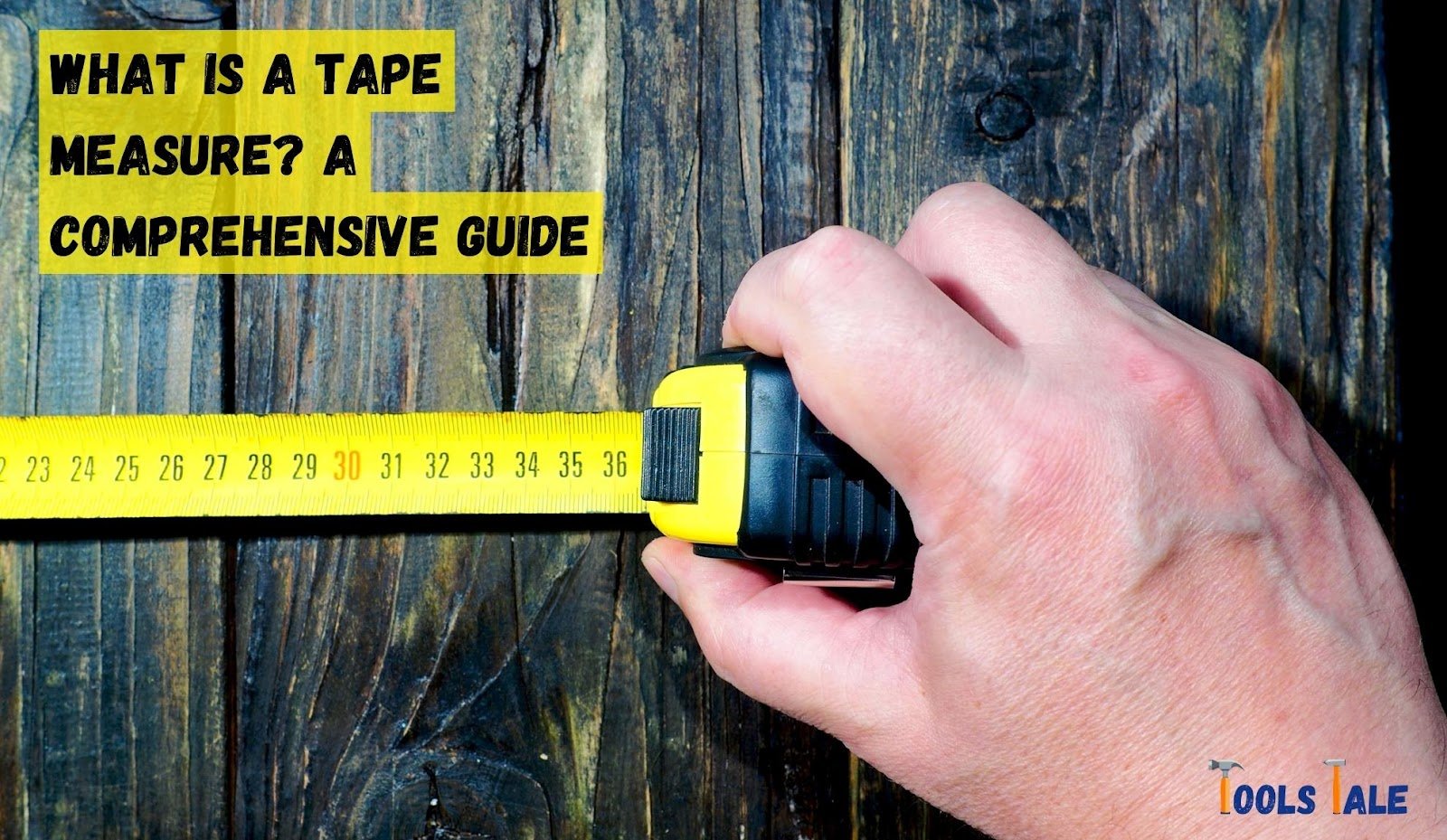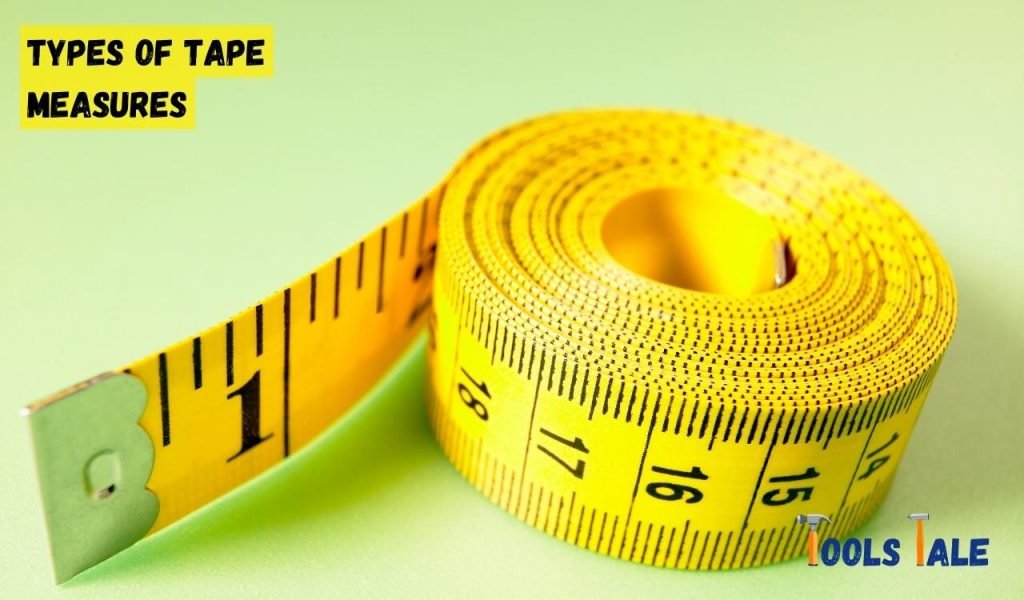Physical Address
304 North Cardinal St.
Dorchester Center, MA 02124
Physical Address
304 North Cardinal St.
Dorchester Center, MA 02124

What is a tape measure? If you’ve ever wondered about this handy tool that saves the day in countless projects, you’re in for a treat! In this guide, we’ll unravel the mysteries of tape measures and how they simplify measurements in both DIY tasks and professional projects.
From reading those tiny markings to measuring curved surfaces, we’ve got you covered with tips and tricks to ensure accuracy. So, whether you’re a seasoned handyman or a curious beginner, let’s dive in and demystify the incredible world of tape measures! Get ready to measure up and conquer your projects like a pro!
Key Summary: What is a Tape Measure?
A tape measure is a versatile tool used to measure lengths accurately. It comes in various types, such as retractable, long, and laser measures. Learn how to read it, its accuracy, and care tips. Master measurements effortlessly with our comprehensive guide. Conquer projects like a pro!
A tape measure is a vital measuring tool used extensively in various tasks, providing accurate length measurements. It consists of a flexible tape blade housed in a protective casing, easily pulled out and locked into place when needed. The pocket tape measure is a common type, ideal for everyday tasks with measurement markings in inches and feet.
For more extensive measurements, long tape measures come into play, designed for larger distances and construction projects. Advancements have led to laser tape measures, using lasers for precision, and digital tape measures with instant digital displays. The tape measure’s endpiece, a small metal hook, secures measurements by hooking onto an object’s edge.
Reading the tape involves understanding measurement markings, with inches and feet or metric units. Whether you’re measuring the dimensions of a room, checking the size of furniture, or embarking on a construction project, a tape measure is a trustworthy companion that helps you achieve precise results.
Its versatility and ease of use make it an indispensable tool for professionals, DIY enthusiasts, and anyone requiring accurate measurements in their day-to-day tasks. So, the next time you reach for your tape measure, remember the importance of this simple yet invaluable tool in our modern world.
This indispensable tool helps measure room dimensions, furniture sizes, or supports professional tasks. Its ease of use and versatility make it invaluable for DIY enthusiasts and professionals alike, ensuring precise results in everyday tasks and complex projects.

Tape measures come in various types, each designed to cater to specific needs and scenarios. Understanding these types will help you select the most suitable tape measure for your particular task:
This is the most commonly used type and is often referred to as the retractable tape measure. It features a flexible metal strip encased in a plastic or metal housing. The tape can be easily extended and retracted with a spring-loaded mechanism. Pocket tape measures are perfect for everyday tasks, such as measuring furniture dimensions, room sizes, or even your waistline. To enhance your measurement accuracy and organization, you can pair your pocket tape measure with a measure worksheet. This worksheet provides a structured space to record your measurements, ensuring you have a clear reference for your projects.
When you need to measure larger distances, such as in construction or outdoor projects, golf club, long tape measures are the go-to choice. They have a more substantial tape blade, often extending to lengths of 100 feet or more. The sturdier design ensures accurate measurements even over extended distances.
Modern technology has introduced laser measuring tapes, which use laser beams to calculate distances with exceptional precision. These high-tech tools are incredibly convenient, providing quick and accurate measurements, especially in hard-to-reach or challenging areas.
For those who prefer digital convenience, digital tape measures offer an excellent alternative. They feature a digital display that instantly shows measurements, eliminating the need for manual reading. Some models also offer additional features like unit conversion and memory storage for past measurements.
Apart from the standard types mentioned above, there are specialized tape measures designed for specific tasks. For example, tailor’s tape measures are flexible and used in sewing and fashion design, while carpenter’s tape measures often have additional features like built-in levels or pencil holders for convenience on construction sites.
Although not strictly tape measures, measuring wheels deserve mention as they serve a similar purpose. These tools consist of a wheel attached to a handle, with the wheel rolling along the ground to measure distances. They are commonly used in outdoor surveying, landscaping, and road construction projects.
A tape measure consists of several essential components that work together to provide accurate measurements. Understanding these parts will give you a deeper insight into how this versatile tool functions:
The tape blade is the heart of the tape measure. It is a long, flexible strip made of steel or fiberglass, marked with measurement increments. The tape blade extends from the housing when pulled, allowing you to measure various lengths.
The housing encases and protects the tape blade when not in use. It is typically made of durable plastic or metal and ensures the longevity of the tape measure.
At the end of the tape blade, you’ll find a small, movable metal hook or endpiece. This crucial component is designed to hook onto the edge of an object securely when measuring. The hook has some play to ensure accurate readings, even when measuring inside or outside edges.
The locking mechanism is a handy feature that allows you to fix the tape blade at a specific length. When engaged, it prevents the tape from retracting while you take measurements, providing stability and accuracy.
Many tape measures come with a built-in belt clip on the back of the housing. The belt clip allows you to attach the tape measure to your belt or pocket, keeping it within reach at all times and preventing accidental drops.
The tape blade is marked with measurement increments, typically in inches and feet or metric units, depending on the type of tape measure. These markings enable you to read and record measurements accurately.
Some tape measures, especially those used in construction, have additional markings called stud markings. These markings indicate the standard spacing of studs in framing, making it easier to locate them during construction work.
Some tape measures have a thumb-operated lock that allows you to hold the tape blade in place without using the locking mechanism. This feature is useful for quick and repetitive measurements.
In heavy-duty tape measures, the housing may have a rubberized case to provide additional protection against impact and drops, ensuring the tape measure’s durability in rugged environments.
Certain tape measures have a magnetic tip on the endpiece, which aids in measuring metal objects by securely clinging to them without the need for someone else to hold the tape.

Reading a tape measure may seem daunting at first, but with a little practice and understanding of its markings, you can quickly become proficient. Here’s a step-by-step guide on how to read a tape measure accurately:
Before you start, familiarize yourself with the measurement units used on the tape measure. Most tape measures in the United States use inches and feet as their primary units, while some may have metric units like centimeters and millimeters.
Look for the end of the tape blade and identify the starting point of your measurement. It’s usually the metal hook or endpiece, which should be positioned at the edge of the object you want to measure.
Carefully pull out the tape blade from the housing and extend it along the surface of the object you’re measuring. Make sure the tape is straight and taut for accurate readings.
The whole inches are the longest and most prominent markings on the tape blade. Locate the nearest whole inch marking to the end of the object you’re measuring. This value represents the whole number of inches.
After identifying the whole inches, look for smaller markings between the whole-inch increments. These markings represent fractions of an inch, such as eighths, sixteenths, or thirty-seconds. Determine which fraction the tape blade aligns with to get the precise measurement.
When measuring an object’s length, the metal hook or endpiece should hook onto the edge securely. For inside measurements, the endpiece should be pushed against the surface, while for outside measurements, it should hook over the edge.
Keep in mind that the metal hook or endpiece has some extra length, typically around 1/16 of an inch. When measuring, ensure that the endpiece is included in your reading.
To ensure accuracy, take multiple measurements of the same dimension and compare the results. If there are slight differences, take the average for a more reliable value.
For tape measures using metric units, locate the whole centimeter marking nearest to the end of the object being measured. Then, identify the smaller markings between the centimeters to get the precise measurement in millimeters.
Reading a tape measure may require some practice, especially if you are new to using one. Be patient and keep practicing to improve your accuracy and confidence over time.
Using a tape measure effectively and maintaining it properly are crucial for obtaining accurate measurements and ensuring the tool’s longevity. Here are detailed guidelines for both the proper use and maintenance of a tape measure:
Using a tape measure effectively is essential to obtain accurate measurements and ensure your safety during various projects. Here are some detailed tips for proper usage:
When measuring an object’s length, ensure that the metal hook or endpiece is securely hooked onto the edge. For inside measurements, press the endpiece against the surface you’re measuring, and for outside measurements, hook it over the edge firmly. The hook should hold the tape in place without slipping.
To achieve precise measurements, keep the tape blade straight and taut while measuring. Avoid bending or twisting the tape, as this can lead to inaccuracies. Hold the tape parallel to the surface you’re measuring to get reliable readings.
For longer measurements or when you need to stabilize the tape, engage the locking mechanism. This holds the tape blade in place, preventing accidental retractions and ensuring consistent measurements. Double-check that the tape is locked before recording the measurement.
The metal hook or endpiece at the beginning of the tape blade adds a small amount of length, usually around 1/16 of an inch. Remember to include this extra length in your measurements. The hook compensates for the thickness of the endpiece, providing accurate results.
To ensure accuracy, take multiple measurements of the same dimension and compare the results. If there are slight differences, calculate the average for a more reliable value. Consistency in your measurements minimizes errors.
When reading the measurement, ensure that the tape blade is at eye level for precise readings. Reading from an angle can lead to parallax errors, where the measurement appears different from what it actually is.
Proper maintenance is crucial to keep your tape measure in top condition and ensure its accuracy. Here are some detailed maintenance tips:
Regularly clean the tape blade with a soft, damp cloth to remove dirt, debris, and residue. A clean tape extends and retracts smoothly, preventing measurement issues.
Apply a small amount of silicone lubricant or graphite powder to the moving parts, such as the locking mechanism and the spring mechanism for retracting the tape. Lubrication ensures smooth operation and prolongs the life of these components.
Store your tape measure in a dry, clean place, away from extreme temperatures and direct sunlight. Coiling the tape neatly and avoiding sharp bends helps prevent tangling and damage to the tape blade.
Periodically check the accuracy of your tape measure by measuring a known standard, such as a ruler or calibration tool. If you notice any inconsistencies, consider replacing the tape or having it professionally calibrated.
Avoid yanking the tape blade out or letting it snap back into the housing forcefully, as this can damage the tape’s integrity. Gently extend and retract the tape to maintain its longevity.
Tape measures offer several advantages over other measuring tools, making them a popular choice for a wide range of applications. Let’s explore the advantages of tape measures and how they compare to other common measuring tools:
Using a tape measure may seem straightforward, but certain common mistakes can lead to inaccurate measurements and compromised results. To ensure precise readings and efficient usage, avoid the following mistakes:
One of the most common errors is forgetting to account for the extra length of the metal hook or endpiece at the beginning of the tape blade. This can result in slightly longer measurements than intended, leading to inaccuracies.
Misreading the fractional markings on the tape measure, especially when measuring smaller increments, can also lead to incorrect measurements. Pay close attention to the markings and take your time to interpret them accurately.
Bending or kinking the tape blade can cause it to lose its straightness and affect the overall accuracy. Ensure the tape remains flat and straight while measuring to obtain reliable readings.
Neglecting regular maintenance can hinder the smooth operation of the tape measure and decrease its accuracy. Make sure to clean the tape blade regularly, lubricate moving parts, and store it properly to extend its lifespan.
Pulling the tape blade too far beyond its safe limit can cause it to snap back forcefully into the housing. This not only damages the tape but can also lead to injuries. Always extend the tape to a reasonable length and avoid overextending it.
Using a tape measure with a bent or damaged tape blade can result in incorrect measurements. Inspect the tape regularly for any signs of damage and replace it if necessary.
Parallax errors occur when the measurement is taken from an angle rather than at eye level. Always ensure that the tape blade is at eye level when reading the measurement to avoid inaccuracies.
Over time, tape measures may experience wear and tear, affecting their accuracy. If you notice signs of wear, such as faded markings or a loose tape blade, consider replacing the tape measure for precise measurements.
If you’re using a laser measuring tool, neglecting regular calibration can lead to inaccurate readings. Make sure to calibrate the device according to the manufacturer’s recommendations to maintain its accuracy.
Taking measurements hastily can lead to errors. Take your time and ensure the tape is secure and straight before recording the measurement. Double-check the readings to eliminate any chances of mistakes.
In conclusion, a tape measure is an indispensable tool for various tasks, offering portability, versatility, and ease of use. By following proper usage techniques and maintaining the tape measure regularly, users can ensure accurate measurements and extend the tool’s lifespan.
While tape measures excel in many applications, laser measuring tools provide unparalleled precision over long distances, albeit with increased complexity and cost. Avoiding common mistakes, such as ignoring the hook length and misreading markings, is crucial for obtaining reliable measurements.
With attention to detail and proper care, the tape measure remains a reliable companion in both professional and DIY projects, aiding in achieving successful outcomes with efficiency and precision.
A tape measure is used to measure lengths and distances accurately for various tasks, including construction, carpentry, sewing, and DIY projects.
Reading a tape measure involves identifying whole inches and fractions to determine the precise measurement. The process may vary based on the measurement units used, such as inches, feet, or metric units.
Tape measures come in various types, including standard retractable tape measures, long tape measures for extended reach, pocket-sized tape measures, and laser measuring devices for precise long-distance measurements.
Tape measures generally provide accurate measurements, but their precision may vary based on the quality and calibration of the tool. High-quality tape measures with clear markings and sturdy construction offer more reliable results.
Yes, tape measures with flexible tape blades can measure curved surfaces, making them versatile for various applications.
Metric tape measures use centimeters and millimeters, while imperial tape measures use inches and feet for measurements. Understanding the differences between the two systems is essential for accurate readings.
The water resistance of tape measures can vary depending on the design and materials used. Some tape measures come with weather-resistant features, but it’s essential to check the manufacturer’s specifications.
In some tape measures, the tape blade can be replaced if it becomes damaged or worn out. However, this option may not be available for all tape measure models.
Proper maintenance includes cleaning the tape blade regularly, lubricating moving parts, storing the tape measure in a dry place, and avoiding overextending the tape blade.
Yes, there are digital tape measures with built-in displays that show measurements electronically. Some smart tape measures can connect to mobile devices via Bluetooth and offer additional features for data logging and calculations.